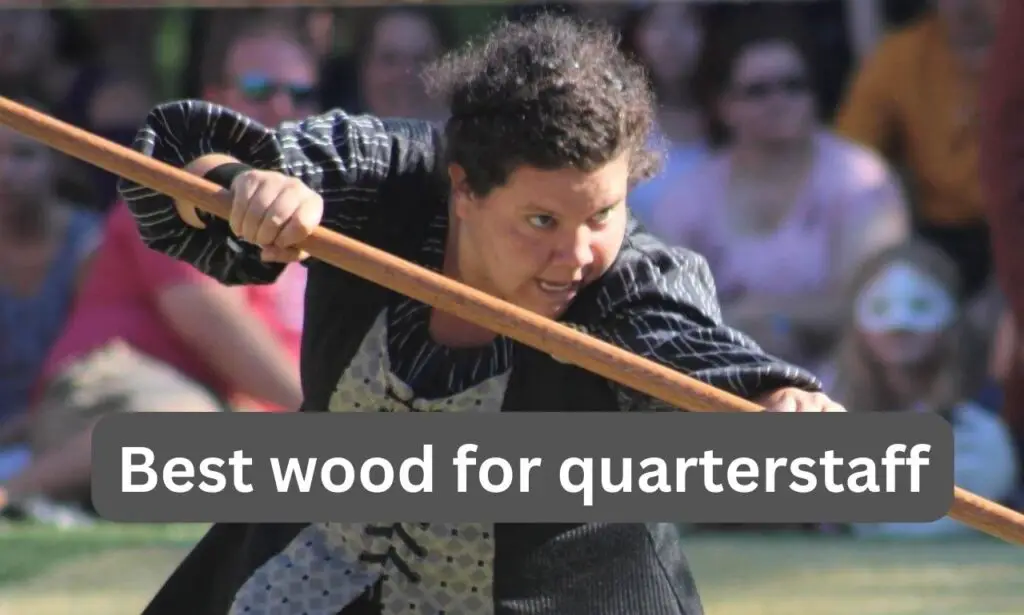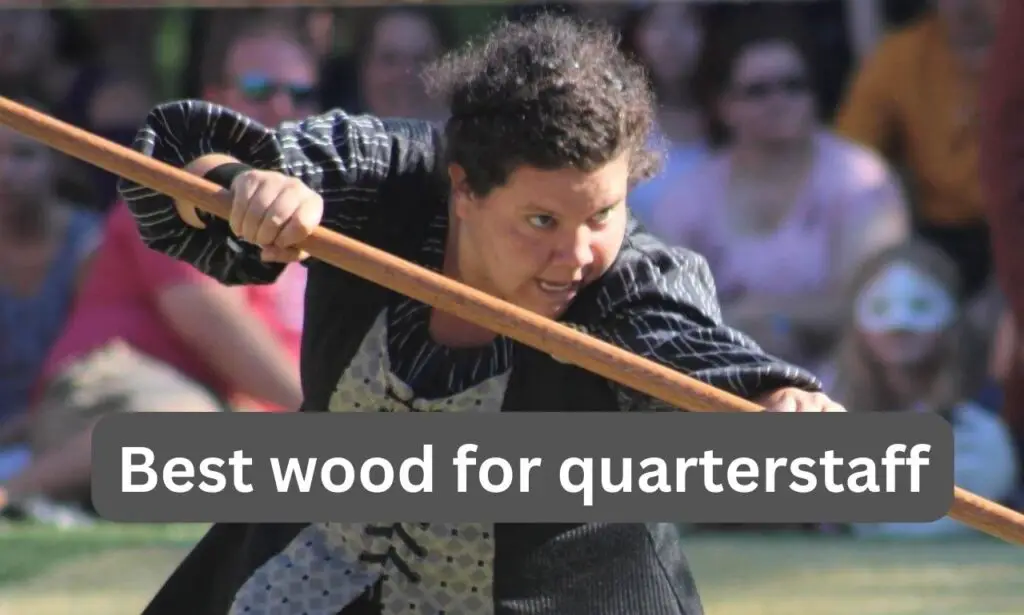A quarterstaff is a long wooden staff that has been used as a weapon and tool for centuries. Whether you’re looking to practice martial arts, perform historical reenactments, or just add a unique piece to your collection, choosing the right wood for your quarterstaff is crucial.
There are many types of wood that can be used to make a quarterstaff, each with its own unique characteristics and benefits. In this guide, we’ll take a look at some of the best woods for quarterstaffs and explore what makes each one a great choice.
From the dense and durable hickory to the flexible and impact-resistant ash, there’s a wood out there for every quarterstaff enthusiast. So let’s dive in and find the perfect wood for your next quarterstaff project!
Table of Contents
Best wood for quarterstaff

Hickory –
Hickory is a popular choice for weapon-making because of its incredible strength and density. It’s able to withstand heavy impact and shock, which makes it a great choice for a quarterstaff that will be used for sparring or training. Additionally, hickory has a beautiful, subtle grain pattern that adds a touch of character to your weapon.
White Oak –
White oak is a reliable and sturdy wood that has a classic look that never goes out of style. It’s easy to work with, which makes it a great choice for customizing your quarterstaff. White oak is also known for its resistance to decay and rot, so you can be sure that your quarterstaff will last a long time.
Red Oak –
Red oak is a great choice for those who are on a bit of a budget. It’s similar to white oak in terms of strength and durability, but a little bit cheaper. Red oak is also easy to work with and has a nice, straight grain that makes it a popular choice for woodworking projects.
Ash –
Ash is a popular choice for quarterstaffs because of its flexibility. It has a bit of a bounce to it, which can be great for sparring or practicing forms. Additionally, ash has a pale color that looks great with a little bit of oil or varnish.
Hard Maple –
Hard maple is a dense and durable wood that is often used for flooring and furniture. It’s also a great choice for a quarterstaff because of its strength and resistance to impact. Hard maple has a tight, uniform grain pattern that gives it a clean, modern look.
European Beech –
European beech is a versatile wood that is often used for furniture and flooring. It’s also a great choice for a quarterstaff because of its hardness and strength. European beech has a warm, reddish-brown color that looks great with a little bit of oil or varnish.
Cherry –
Cherry is a beautiful wood that is known for its rich, reddish-brown color. It’s also a great choice for a quarterstaff because of its strength and durability. Cherry has a fine, uniform grain pattern that gives it a smooth, polished look.
Black Locust –
Black locust is a dense and durable wood that is resistant to rot and decay. It’s also a great choice for a quarterstaff because of its strength and hardness. Black locust has a distinctive yellow color that adds a touch of character to your weapon.
Osage Orange –
Osage orange is a dense and hard wood that is known for its strength and durability. It’s also a great choice for a quarterstaff because of its flexibility and resistance to impact. Osage orange has a bright, yellow-orange color that looks great with a little bit of oil or varnish.
Birch –
Birch is a light-colored wood that is often used for furniture and cabinetry. It’s also a great choice for a quarterstaff because of its strength and flexibility. Birch has a tight, straight grain pattern that gives it a clean, modern look.
How thick should a quarterstaff be?
The thickness of a quarterstaff can vary depending on personal preference and the intended use of the staff. Generally, a quarterstaff should be thick enough to provide stability and strength, but not so thick that it becomes unwieldy.
For most people, a good rule of thumb is to choose a quarterstaff that is roughly 1.5 to 2 inches in diameter. However, some people may prefer a slightly thinner or thicker staff depending on their hand size and strength.
If you plan to use your quarterstaff for sparring or training, it’s important to choose a thickness that will allow you to grip the staff comfortably and effectively. A staff that is too thick may be difficult to control, while a staff that is too thin may not provide enough stability for heavy impact.





